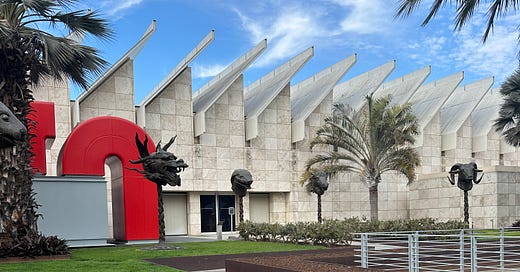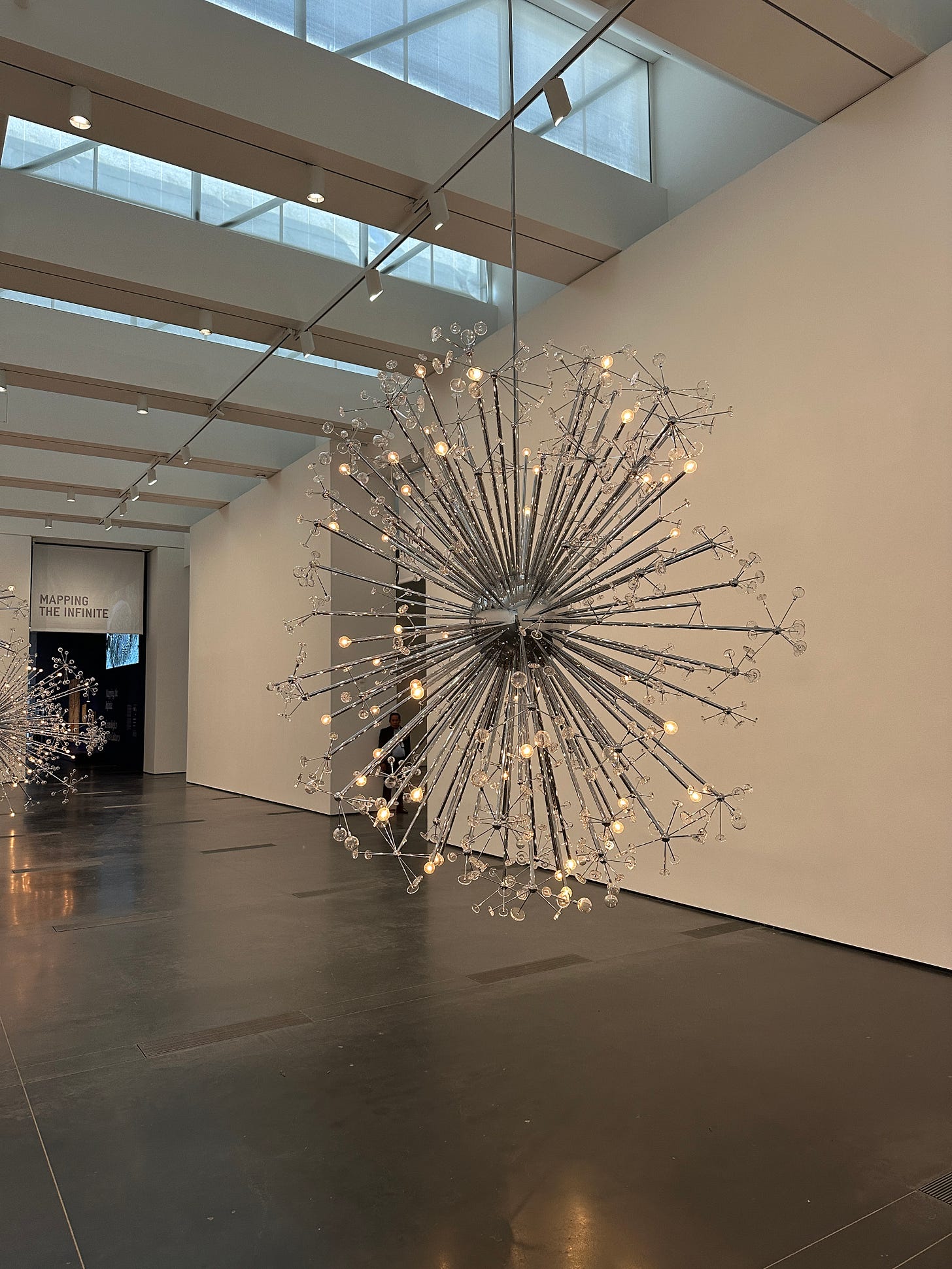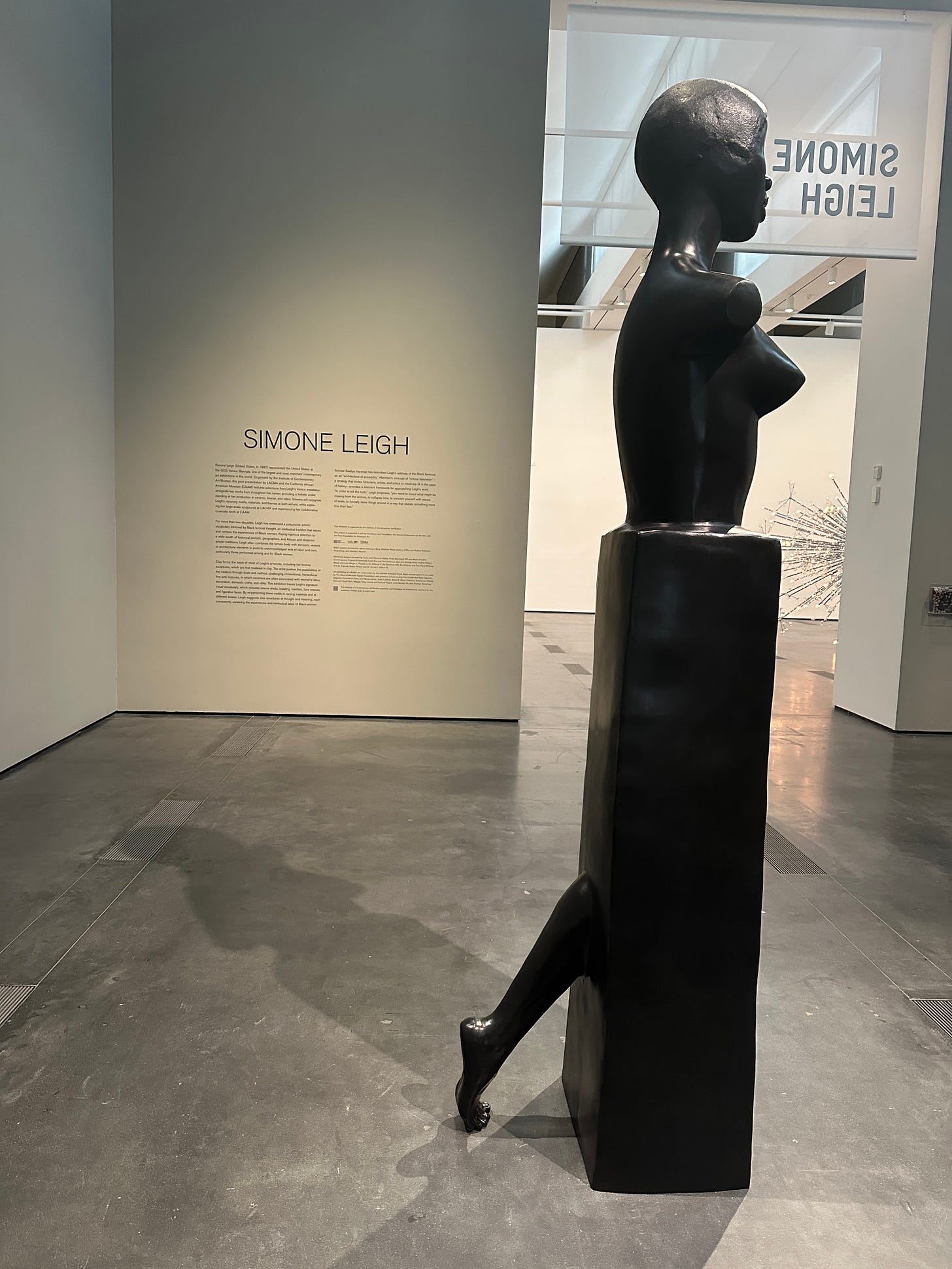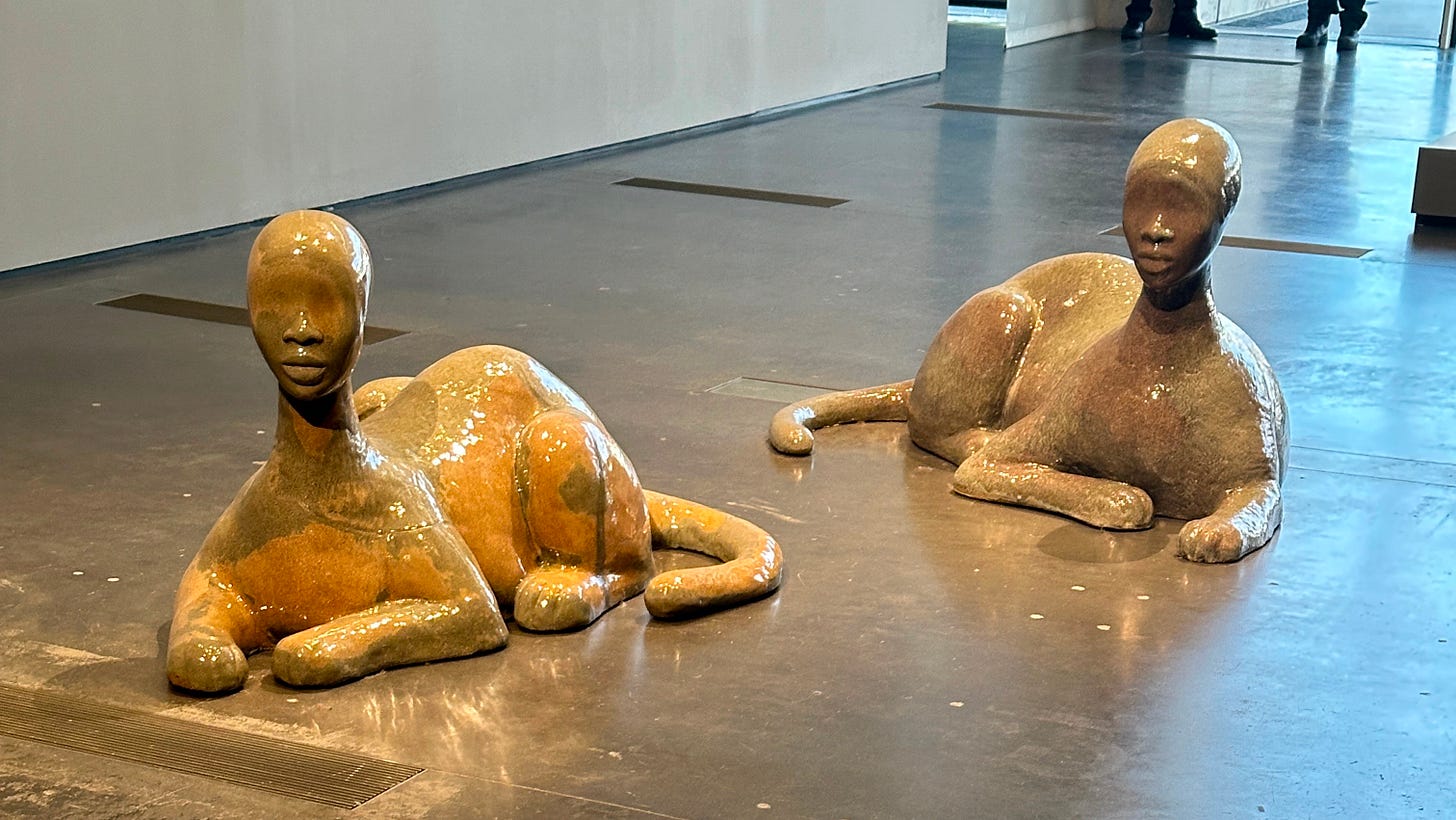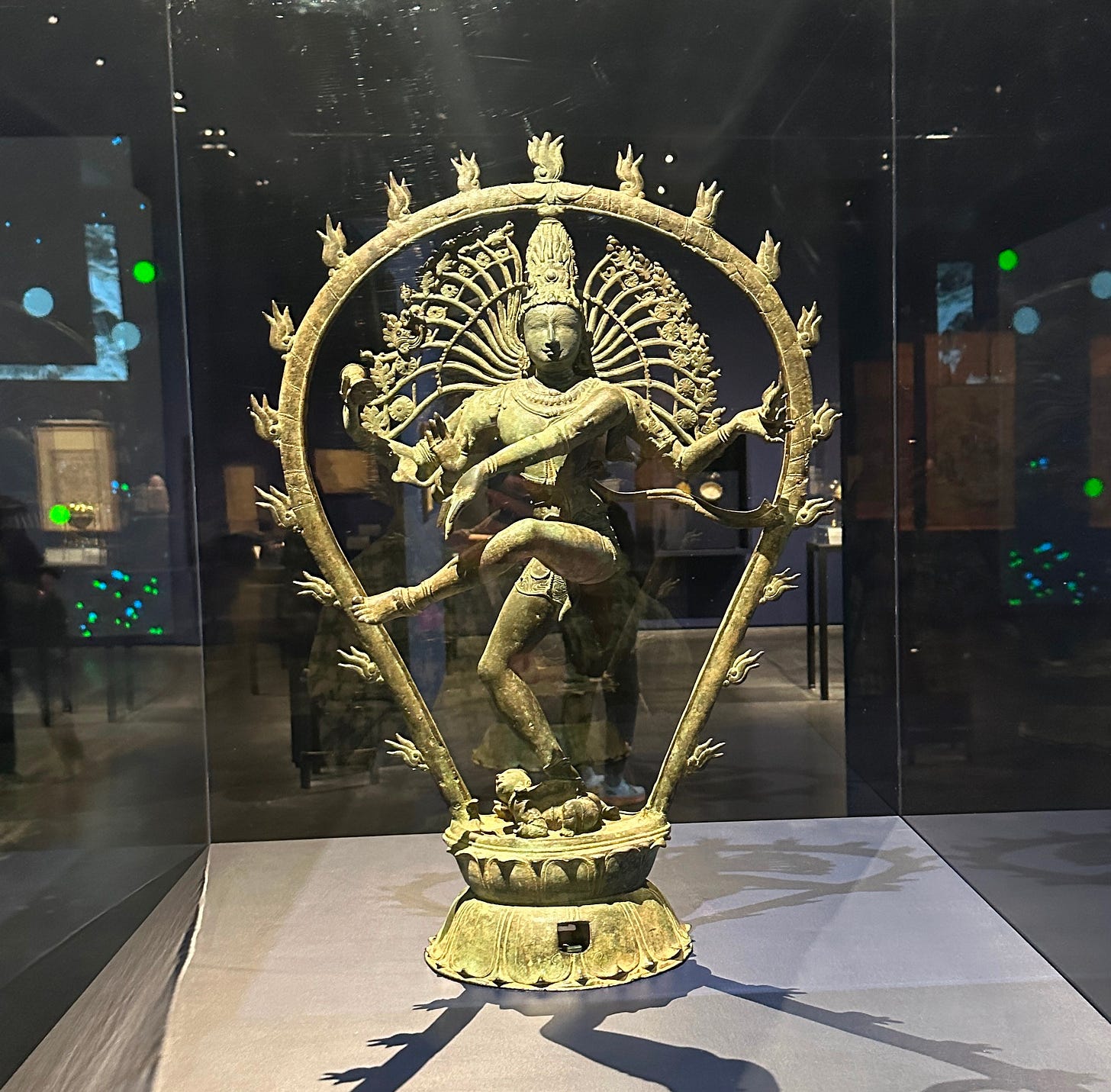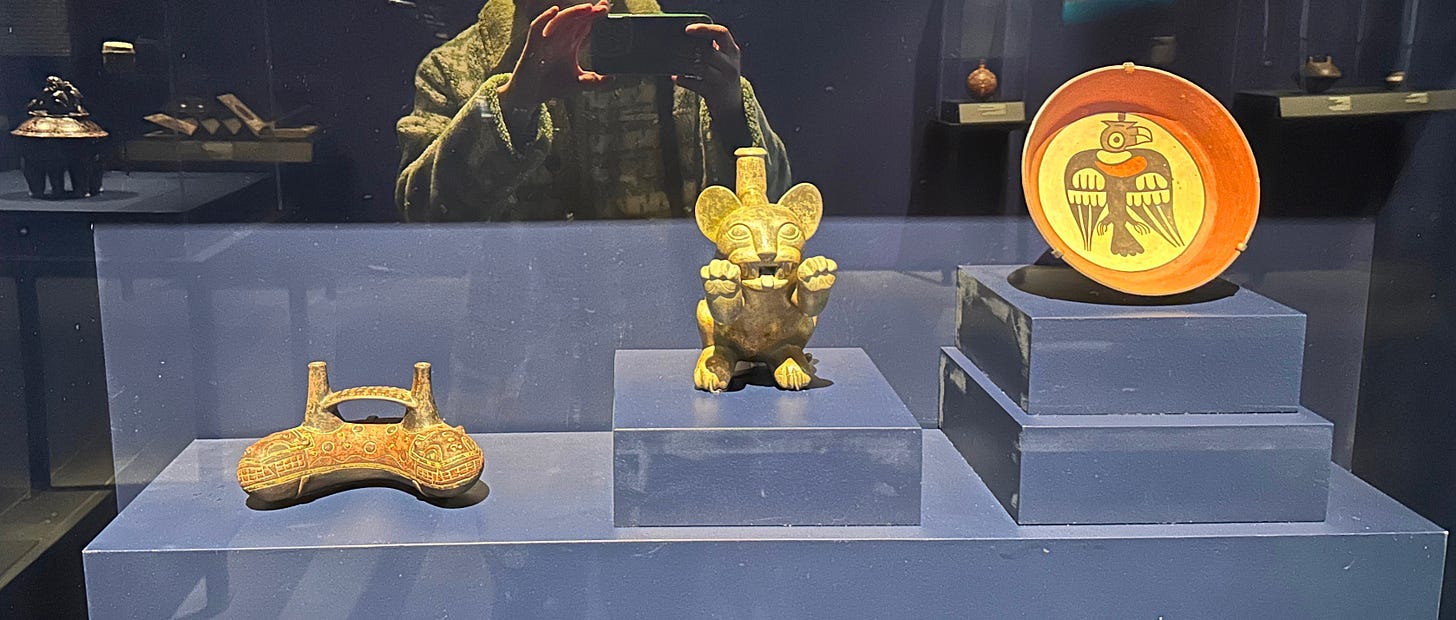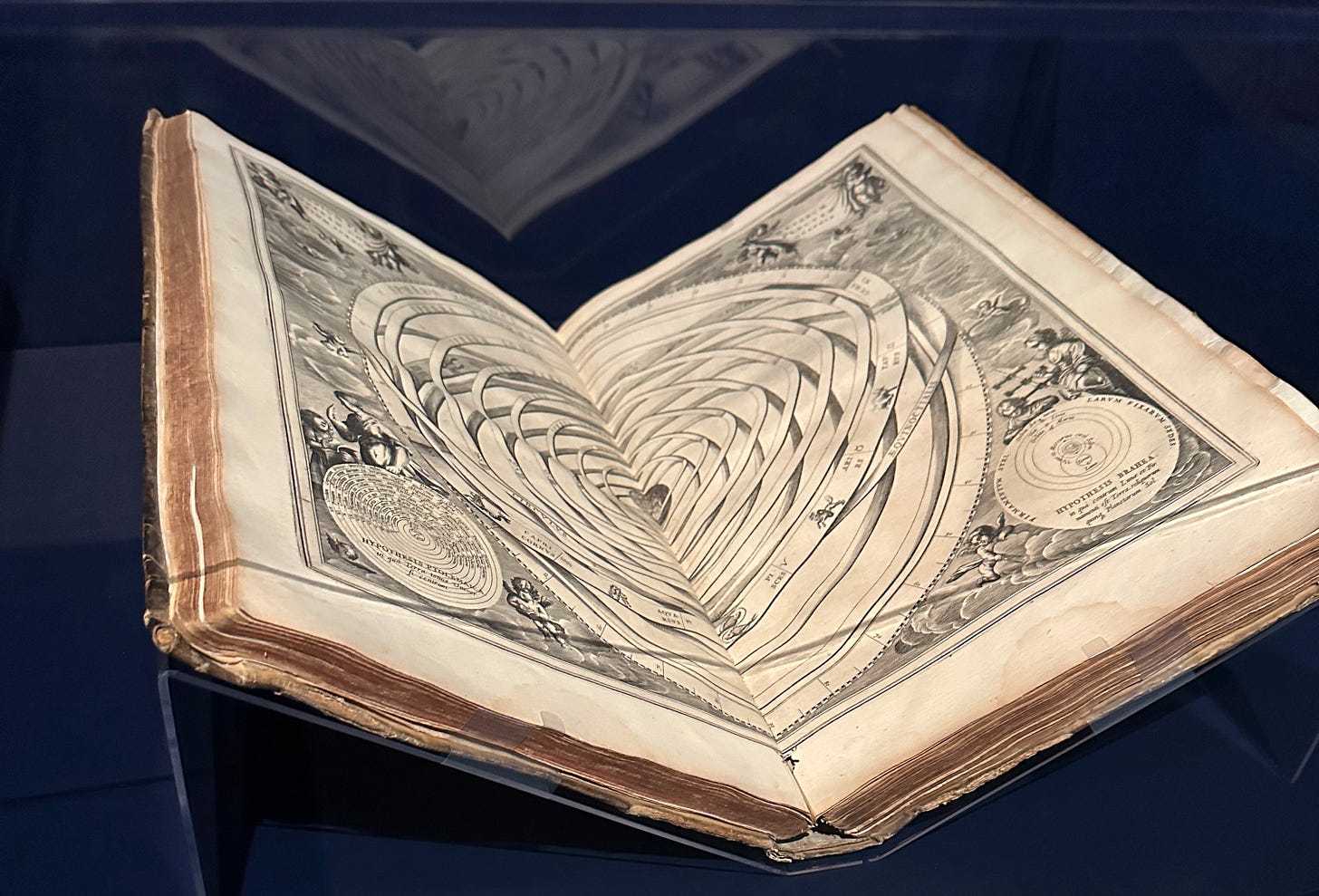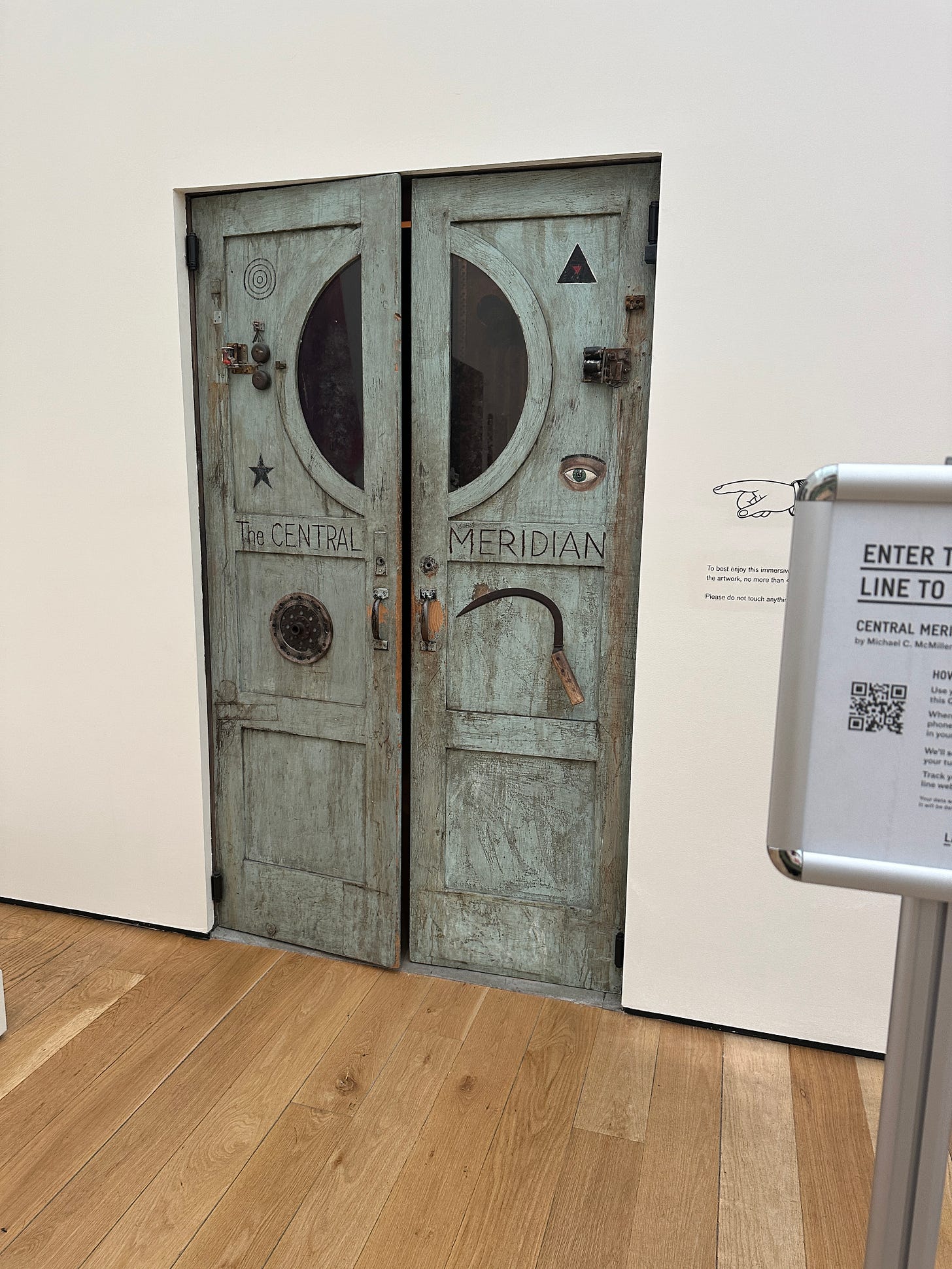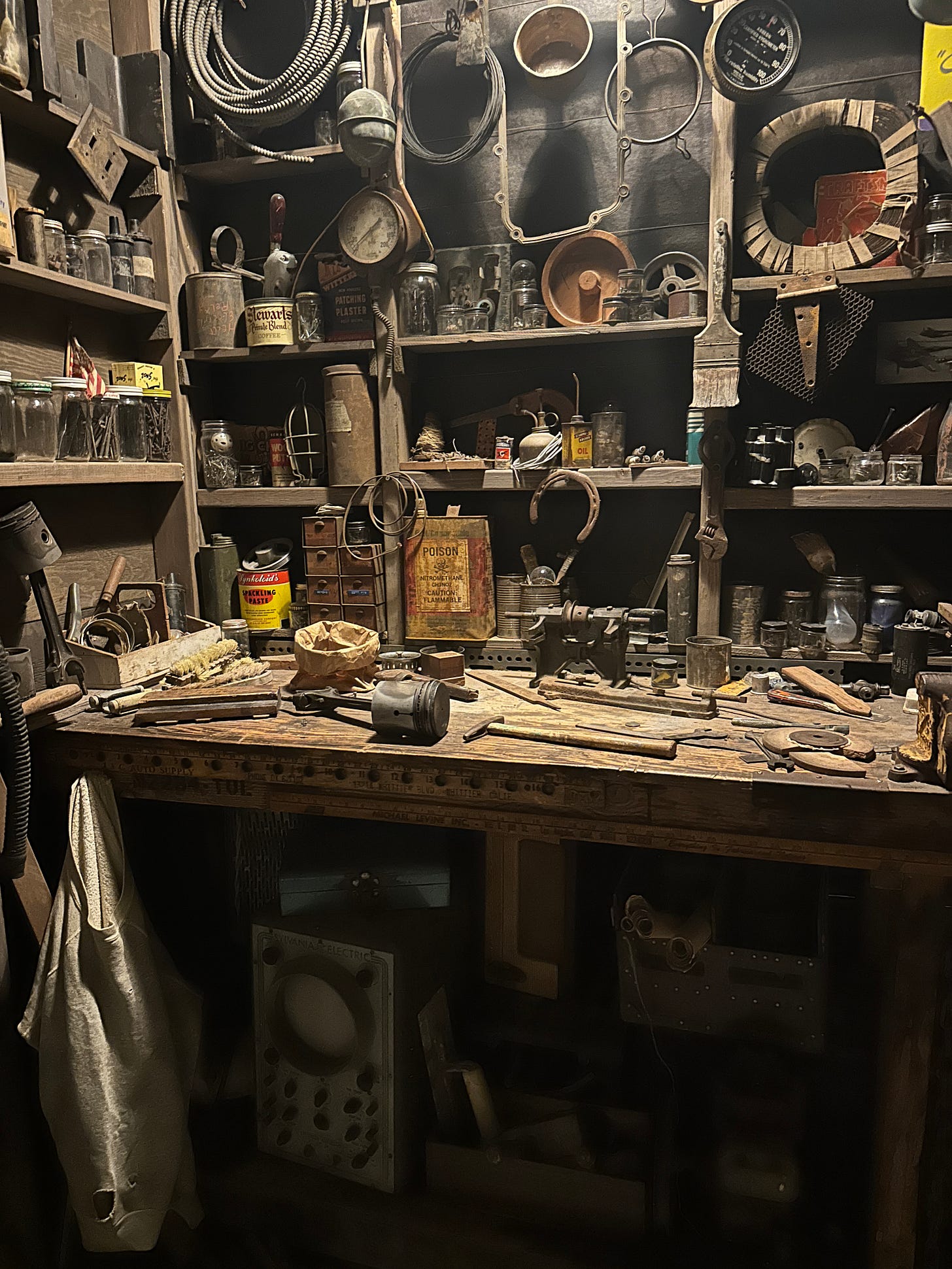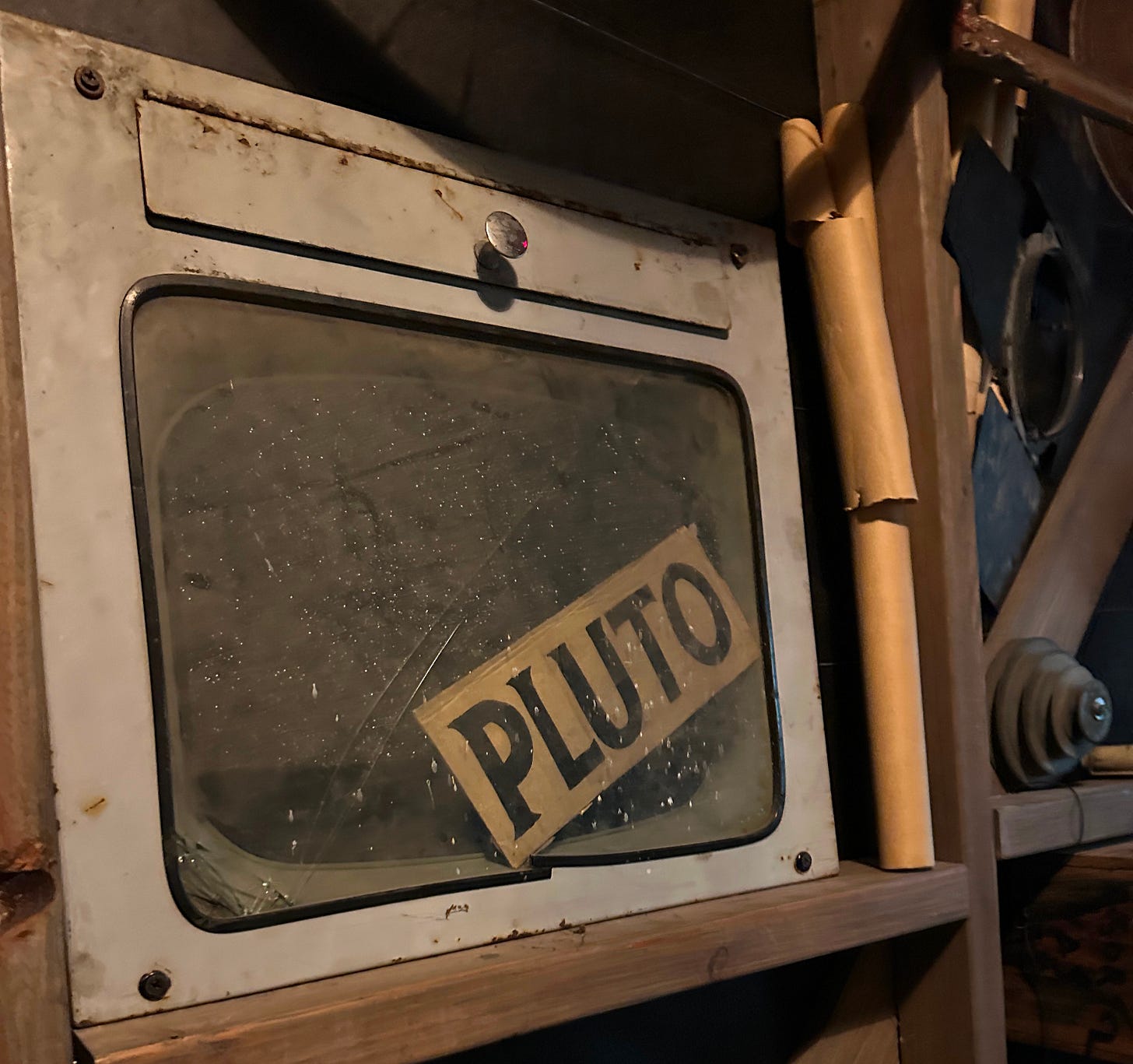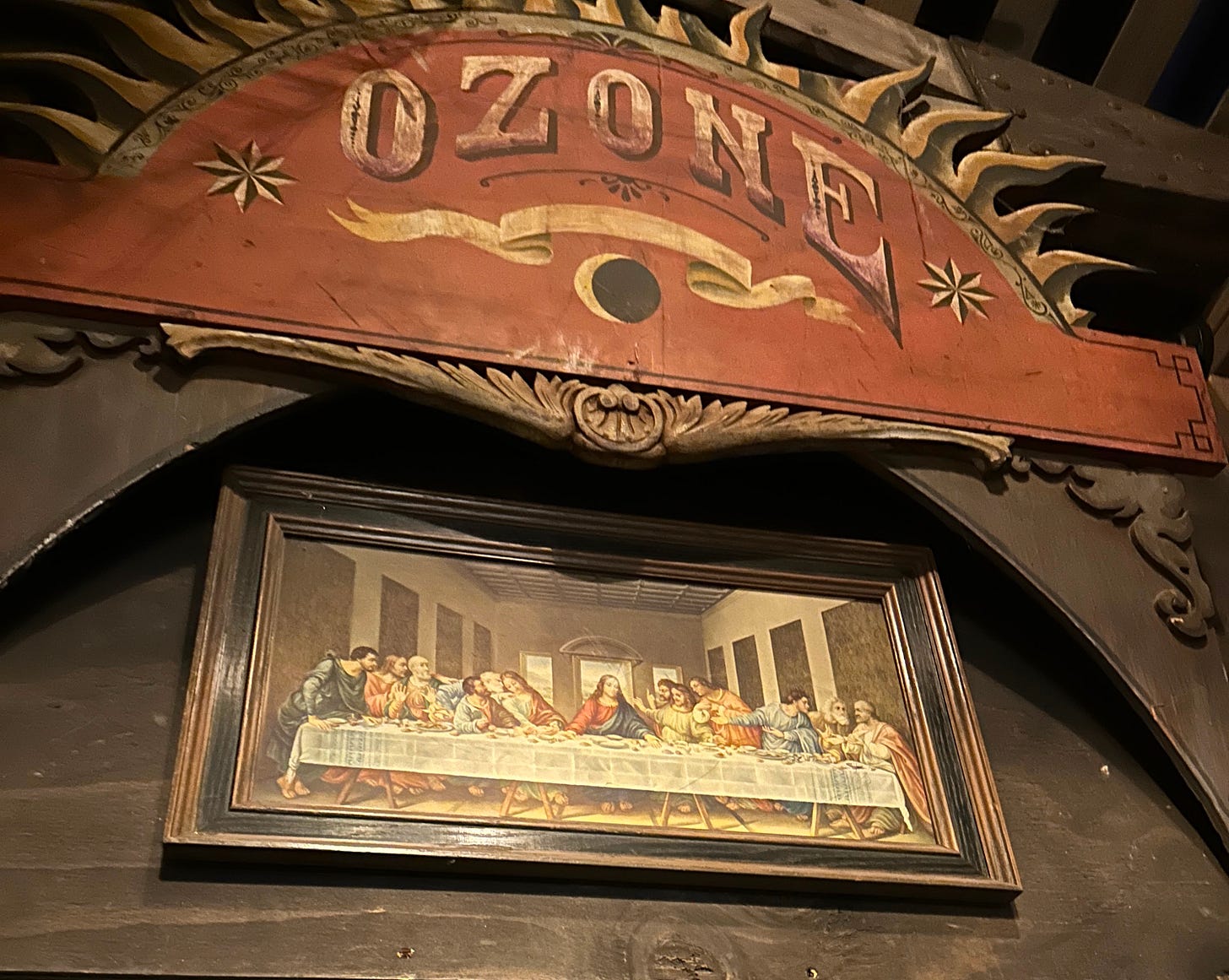Reflections from a visit to LACMA
Some amazing sculpture, the Mapping the Infinite exhibition, a surreal 1950s garage, and more!
Welcome to this week’s edition of Reading Art!
It’s been a very difficult couple of weeks here in Los Angeles following the rampant devastation from the wildfires. It didn’t feel right to post last week, and, to be honest, I’m not sure if it feels right today either. But, to get my mind off things, I thought I would share the post I had intended to publish last week, about a recent trip I took to LACMA during the winter holidays. Right now, I want to think about LA at its best.
There are a lot of great exhibitions on that I was excited to finally see.
I was blown away by the construction for the new pavilion! I didn’t get a picture of it, but it’s going to be a really big space with so many possibilities for . I’m so excited for it to open! There are about a million pictures on my phone, and I can’t include them all here, sadly, but today’s newsletter discusses some of the pieces I’m most excited to have seen, and to talk about with you.
I spent most of my time in the Resnick Pavillion. While there were several distinct exhibits here, they were all unified by their exploration of deeper meanings, the quest for knowledge, and, dare I say, philosophy.
Island Universe: Exploring the Multiverse in Art
My photo here does not do justice to Josiah McElheny’s Island Universe. It lit up the whole room and reminded me of a dandelion just before you make a wish.
The work points to the concept of the “multiverse,” or the infinite number of universes/worlds that all coexist with one another.
One things that struck me about the works I saw is that many of them engaged with ancient thought, either explicitly or in the ways in which they reimagined, updated, questioned, or problematized tradition. Reception of/engagement with the precedents of the past is one of my major research areas of interest and the basis of my dissertation, so I couldn’t help but notice that element right away. Of course, there are a lot of other ideas explored in all of these works—but this is just one of my “readings” of what I saw at LACMA.
To go back to the multiverse, I was reminded of Stoic cosmology, which allows for multiple worlds and universes (in addition, this world repeats its events every 10,000 years before burning up and starting over—weird, I know, but I digress). Buddhism also explores ideas of multiple universes, and several other schools of thought. The sixteenth century saw an increased amount of interest in this idea as well. Going back to McElheny’s piece, the sparkling spires represent the many possibilities for other worlds, not necessarily worse or better ones than our own, just different ones. The initial impression of a dandelion is maybe a fitting one, since the moment of making a wish involves imaging a different reality than the one you’re currently in, and hoping to bring it to life.
The work also reminds me of a globe, for some reason, or a model of the galaxy, with the planets revolving around the sun. What is at the core of McElheny’s “island universe”? Is it the divine? The Stoics would say yes, as they believed in the guiding hand of the divine, but the Epicureans would say no, as they believed that any existing gods did not care for human affairs. If not the divine, what is at this center? Is it our own human potential? I found the installation incredibly thought-provoking.
Simone Leigh
In the next room was some of the work of Simone Leigh, which had been displayed at the 2022 Venice Biennale. LACMA describes Leigh’s work as “center[ing] the experience of Black women…[combining] the female body with domestic vessels or architectural elements to point to unacknowledged acts of labor and care, particularly those performed among and for Black women.”
The form of many of the pieces featured also reminded me of the Ancient Greek herm, a sculpture of a (male) figure, often a (male) deity or (male) famous figure with some or no torso showing, the lower half a rectangular block. Oftentimes, male genitalia would be sculpted into this uniform lower half. Since the herm is basically a symbol of masculine power, I found it all the more striking that many of Leigh’s works are “herms” that champion the feminine.
It’s hard to see in this photo with the lighting in the gallery, but there is a vertical line drawn up the center of the rectangular block that forms the statue’s base, which is perhaps also speaks to the herm’s inclusion of genitalia. Herms were originally thought to ward off harm and have a protective force; there might be some commentary here on the Black female experience of being used, essentially, as a protective force, but without the recognition and honor that (male) protective forces have historically received.
The foot out the back was also an intriguing detail on this sculpture, pushing off the floor as though the figure wants to start running—but can’t, because of the block of stone, which might symbolize the weight of unpaid and unrewarded labor, which keeps one in frenzied motion yet not really going anywhere.
I also loved these lioness/sphinx figures with women’s faces.
They reminded me of the Egyptian goddess Sekhmet, only she had a lioness’ head and a human body (often how Egyptian gods are portrayed—humanoid body, animal head). Sekhmet was the daughter of Re, the sun god, and she was associated with the punishment of Ra’s adversaries, but a protector of the Pharaoh. Ultimately, for me Leigh’s work really captures the delicate interplay between power and powerlessness and the nuanced reality of women’s experiences.
Mapping the Infinite
I was especially excited to see Mapping the Infinite: Cosmologies Across Cultures, which was done in collaboration with scientists at the Carnegie Observatories and the Griffith Observatory. This was an impressive array of objects and works that shows the many ways in which different ancient cultures visualized and theorized about the cosmos.
There was a bit of everything, from Hindu god Shiva:
to some beautiful Andean vessels:
And a number of early modern manuscripts. I love how this one shows the rings of the cosmos with the zodiac signs around:
This must have been a huge effort to put together, and it was one of my favorite exhibitions of the year. My only very small critique was that I wished there was a little more explanation—the exhibition moved quickly to fit as many cultures in as possible, which was amazing, but I would have loved a bigger “recap” that tied everything together. But in some ways I preferred that they kept it open-ended, because then visitors can assign their own meanings and make their own interpretations.
Last but not least, a surreal blast from the past
I briefly popped into the modern/contemporary art pavilion. On the third floor, just as I was preparing to leave, a Visitor Services associate let me know that there was nobody in this installation, so I could go in (only 4 were allowed at a time!).
“What’s in there?” I asked, eyeing the door.
“I don’t want to spoil it,” she said.
Color me intrigued.
As it turns out, it was a very cool and surreal model garage, from the 40s or 50s, maybe, filled with relics of the midcentury. This is Michael C. McMillen’s Central Meridian (The Garage), originally created in 1981 for the LACMA exhibition The Museum as Site.
It reminded me of my grandfather’s garage in the best way, although there were some surreal touches. In the picture below, if you look carefully in the center of the table, is a large bottle that reads POISON:
There was a mysterious sign/sticker that read PLUTO:
In continuing our theme of classical allusion, there’s nothing like a reference to the god of the Underworld!
There were other “creepy” things too, like a vintage poster for a production of Dracula.
There wasn’t much explanation of what we were supposed to take away from this, and honestly I liked it much better that way. The exploration of nostalgia, progress, and popular culture in the mid-twentieth century was incredible. The animacy of these objects that might so easily have been cast aside as junk, or recycled into something else, is palpable. This might have been my favorite installation of all time, and I’m tempted to go back again and see what else I can spot in there.
Finally, a print of The Last Supper—a reminder of death, in keeping with the surreal theme. But also of life and the promise of rebirth, another comment on nostalgia: it looks forward as much as it looks backward.
Thank you for reading this week’s newsletter!
I very much enjoyed my trip to LACMA! Thanks for coming with me on this virtual “tour” of some of the works of art I was able to experience in person. Take care until next time.
MKA
Some resources to help victims of the Los Angeles wildfires:

